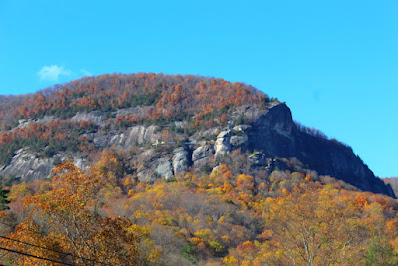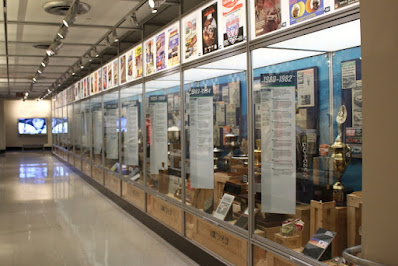When I think of gold rushes, I visualize mining in western United States; so, I was surprised to learn that the first United States gold rush was in North Carolina. There are a number of kiosks in Bechtler Mint Site Historic Park near Rutherford that provide information on the North Carolina Gold Rush.
It all started in 1799, when a 17-pound gold nugget was found in a stream east of Charlotte. Soon thousands of prospectors arrived in North Carolina to find their fortunes. The gold around Charlotte was soon panned out, so the prospectors moved northwest to Rutherford, where placer mining was more successful.
Accounts vary, but it is believed that Christopher Bechtler heard of the gold rush and came from Germany to Rutherford on December 16, 1829, to search for gold. He was not familiar with mining and his search for gold was unsuccessful. Bechtler had been a jeweler and metalsmith in Germany, so miners in the area urged him to create a market for raw gold by opening a private mint.
The nearest United States mint was in Philadelphia, which was too far to transport raw gold, so Bechtler started minting gold coins for other miners by charging 2.5% of the coin's value. By 1837 he had minted $2.4 million in coins, including the first $1 gold coins in the United States. It is unclear if the adit at the Bechtler Mint Site Historic Park was part of Bechtler's mining activity, or if the adit was used as a secure storage area for gold to be minted.
Located a short distance from Bechtler's mint site is a historic marker stating that this was the location of the first Rutherford Count Courthouse. The site is not well kept and is covered with brush and weeds. No courthouse ruins were visible on the site.
Lake Lure is located near the resort community of Chimney Rock and was the place where they filmed the Dirty Dancing movie in 1987. It is a beautiful lake, located in a mountain setting, so it is a popular tourist destination during the summer months.
Chimney Rock State Park is a place for outdoor enthusiast that like to hike, climb, bird watch, and photograph beautiful and unusual places and things. This is a full-day destination, and we did not have a full day in our travel plans, so we did not stop at the park. We did, however, see a rare bigfoot creature shopping in one of the stores.
Just up the road from Chimney Rock is the unincorporated community of Bat Cave. The actual Bat Cave is the largest augen gneiss granite fissure cave in North America and is not open to the public. However, the town is on the list of unusual place names and it was reported that tourist keep stealing their signs.
Continuing through Bat Cave, the road crosses the Eastern Continental Divide at 2,880 feet, then descends into Ashville (population 94,589), where the world's larges privately owned home is located.
In 1895 George Vanderbilt purchased 125,000 acres of land for his country estate near Ashville and then constructed his 250-room Biltmore House. The house is surrounded by beautiful gardens, fountains, and landscaped grounds.
I did not do my research before we arrived, so I was under the impression that we could just drive up and take pictures of the house and gardens. That was not the case.
After driving through the first security gate without any problems, I found a long line of cars waiting at the second security gate. I noticed a visitor center just before the second security gate, and there were no cars coming, so I just pulled in the oncoming lane of traffic and passed the long line of cars to get to the visitor center. Inside, I learned that the Biltmore House was one of the most popular historic sites in the country, with over a million visitors each year. Realizing that it would take all day to even get to the house, we settled for watching a movie about the property in the visitor center. I used my camera to take a few pictures of other pictures found in the visitor center.
 |
| Entrance Gate to Biltmore Property |
 |
| Biltmore Visitor Center Lobby |
 |
| Biltmore Visitor Center Lobby |
 |
| Biltmore - Photographer Unknown |
 |
| Biltmore - Photographer Unknown |
Before leaving Ashville, we stopped at the Little Pigs B-B-Q for lunch. For $6 each, we got a pulled-pork sandwich with sides. That is less than half of what it would cost for the same meal in Las Vegas!
Mars Hill (population 1,869) is the last city in North Carolina when traveling north on Interstate 26 and is the home of Mars Hill University.
Mars Hill University is a private Christian university and was the first college in western North Carolina. Originally it was called French Broad Baptist Institute (1856-1859), then Mars Hill College (1859-2013), and now Mars Hill University (2013-). Becca Pizzi, the first American woman to win the World Marathon Challenge, is a Mars Hill University alumni.
The Rural Heritage Museum is located in the original campus library, one of the oldest buildings on campus. Artifacts relevant to the history and culture of the Southern Appalachian region, along with changing exhibitions, are presented in the museum.
Just before leaving North Carolina, along Interstate 26 there was a scenic overlook with sweeping mountain and valley views. Unfortunately, we arrived too late in the year and most of the fall colors were gone. I am sure this must have been a spectacular view a few weeks earlier.





















































